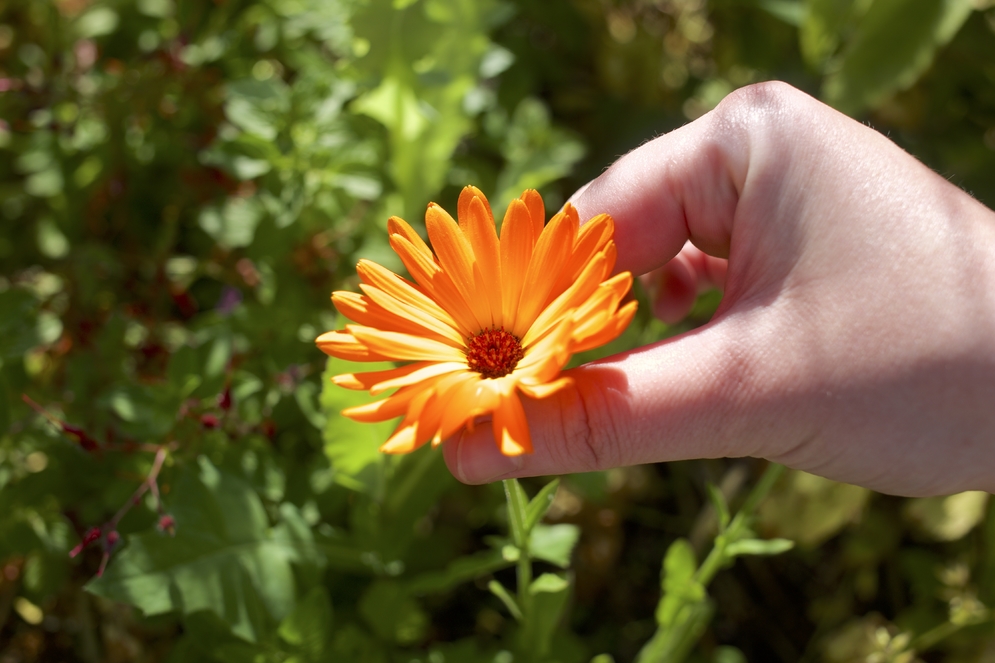Picking marigold
Calendula officinalis, also known by the common name Marigold, has been known and used for medicinal properties since medieval times at least. It's important to notice that only the common deep orange-flowered variety is of medicinal value.
Botanical doctors of the late Middle Ages used marigold as a remedy for various maladies, so much so that any medieval garden would have been incomplete without the marigold flower. One of the first clear historical written sources about this plant is Hildegard Von Bingen, who indicated it as beneficial mainly for intestinal malalignments and scalp problems. Other sources from that time speak extensively of the plant as being capable of inducing menstruation and recommend avoiding its use during pregnancy, as it can cause miscarriage. Its effects on female reproductive health go beyond that, showing the ability to reduce painful symptoms and stabilise the cycle.
It is good to know that marigold is a relatively undemanding plant, that grows in loose soil that heats up easily and is very easy to cultivate. The plants begin to flower in June and continue flowering until the frost kills them.
Sources: Hildegard Von Bingen's Physica: The Complete English Translation of Her Classic Work on Health and Healing, Translated from Latin by Priscilla Throop, 1998
A Modern Herbal, by Mrs. M. Grieve, 1931
Piante medicinali in Sardegna, Enrica Campanini, Ilisso, 2020
